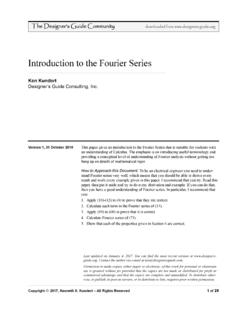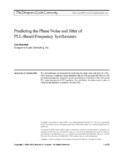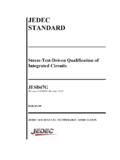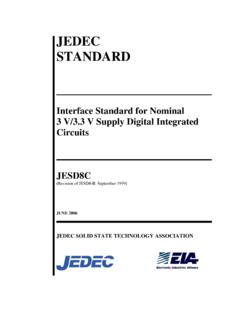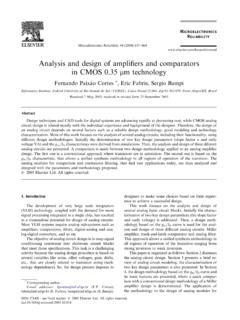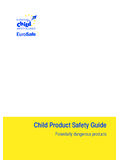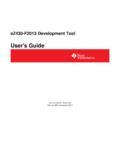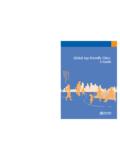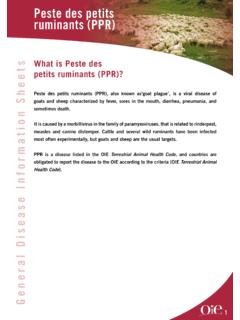Transcription of Modeling Dielectric Absorption in ... - Designer's …
1 The Designer s guide Communitydownloaded from 2008, Kenneth S. Kundert All Rights Reserved1 of 19 Version 2d, June 2008It is well known that Dielectric Absorption plays a critical role in determining the accu-racy of analog sampled-data systems that are based on charge storage, such as sample-and-holds and switched-capacitor ADCs. Less appreciated, but no less important, is the role it plays in determining the quality factor, or Q, of the capacitor. Dielectric absorp-tion has both storage and loss components that act, and are significant, over the entire usable frequency range of the with background information on the origins of Dielectric Absorption , this paper presents two models for a capacitor that exhibits Dielectric Absorption .
2 The first is the relatively well known model proposed by Dow. The second is a model with relatively little exposure that is based on the Dielectric permittivity model of Cole and Cole. This model has fewer parameters than the Dow model and is predictive over a very broad range of manuscript was originally written in March 1982 and was revised in October 2001. It was last updated on June 18, 2008. You can find the most recent version at Contact the author via e-mail at to make copies, either paper or electronic, of this work for personal or classroom use is granted without fee provided that the copies are not made or distributed for profit or commer-cial advantage and that the copies are complete and unmodified. To distribute otherwise, to pub-lish, to post on servers, or to distribute to lists, requires prior written Dielectric Absorption in CapacitorsKen KundertDesigner s guide Consulting, of 19 The Designer s guide IntroductionA fundamental limitation in the accuracy of sample-and-holds and A-D converters is a phenomenon called Dielectric Absorption , which also goes by the names of Dielectric relaxation and soakage [20].
3 Dielectric Absorption is the tendency of a capacitor to recharge itself after being discharged. While not widely appreciated, Dielectric absorp-tion is also the dominant loss model over the entire usable range of most capacitors, and so can also affect the performance of high-Q circuits such as VCOs. This paper covers the symptoms of Dielectric Absorption in both the time and the fre-quency domains, the physical mechanism that causes it, and the process of Modeling SymptomsIf a capacitor remains charged for a long period of time and then is briefly shorted, the voltage on the capacitor will slowly tend to recover to a fixed percentage (typically between and 10%) of its original value. This percentage is a simple measure of Dielectric Absorption .
4 The amount of Dielectric Absorption a capacitor exhibits is highly dependent on the Dielectric material: polystyrene, polypropylene, and teflon display very little Absorption , while ceramic is a much poorer performer. SiO2 displays about Dielectric Absorption , putting its performance in the middle of the pack [12,16]. Recovery that results from Dielectric Absorption can be simply modeled with the circuit in Figure simple model is a good first step, but it is unable to properly model the time con-stant of the recovery, or relaxation, period for most dielectrics. After releasing the short on the capacitor, the voltage will initially build back very quickly. In usually 1 to 10 sec-onds, 50% of the final value is reached. But then the recovery process slows consider-ably and it often takes 20 minutes to close within 5% of the final value.
5 This means that many more time constants will be required to properly model Dielectric model of Figure 1, though an over simplification, shows the Dielectric Absorption has aspects of both memory and dissipation. The memory is provided by the supplemen-tal capacitor C0 C , making the effective capacitance larger at low frequencies than at high. The dissipation is provided by the resistor R. It is the loss provided by R that makes Dielectric Absorption of interest to designers of high-Q circuits. It is the wide range of time constants of Dielectric Absorption , not modeled in Figure 1, that causes both the memory and the dissipation aspects to be noticeable over the capacitor s entire usable frequency simple model for an absorptive capacitor and its response to a negative current RC0 C 0tvv0vfPolar Dielectrics3 of 19 The Designer s guide in Figure 2 is a plot of both the resistive and reactive parts of the impedance of a 10 nF X7R1 multilayer monolithic ceramic capacitor.
6 Notice the behavior of the resis-tive portion of the impedance. It has roughly a one pole slope from 10 kHz to 10 MHz, where it flattens out and then turns up again. This behavior has been widely observed [18,23]. At high frequencies, the resistance is dominated by loss in the conductor (the leads and the plates). It increases roughly in proportion to at high frequencies due to skin effect. At low frequencies, the resistance is dominated by losses in the Dielectric : Dielectric Absorption . It decreases roughly in proportion to f 1. This is consistent with the empirical observation that the dissipation factor (tan D) for many capacitors is almost constant in their usable frequency range [23]. Resistance is related to dissipation factor by (1) Polar DielectricsThe permittivity of a Dielectric varies with frequency as various mechanisms within the Dielectric are excited [5].
7 As an electric field impinges on a Dielectric material, the charge particles in that material will rearrange themselves in such a way as to line their dipole moments up with the field. This acts to increase the flux density and therefore the permittivity. This is shown for a polar material in Figure 3. Region (1) is in the range of 1. The X7R designation indicates that the capacitance deviates no more than 15% from nominal over the 55 C to 125 C temperature (R) and reactance (X) of a 10 nF ceramic R DtanC --------------=f |X|R10 kHz100 kHz1 MHz10 MHz100 MHz1 GHz1k 100 10 1 Polar Dielectrics4 of 19 The Designer s guide and above. At these frequencies there is no interaction between the material and the wave, and so the permittivity ( ) is the same as the free space permittivity ( 0).
8 As frequency decreases the inner electrons (2), the valence electrons (3), and eventually the atoms (4) themselves successively resonate and make their contributions to the permit-tivity. Notice that during these resonances the permittivity becomes complex ( = + j ), which indicates that the Dielectric becomes lossy. As frequency descends, polar molecules (5), or in some materials, electric domains, become excited and increase the permittivity greatly. For the polar molecules this is called dipole relaxation, while for the electric domains it is called ferroelectric relaxation (so named because of its similar-ity to ferromagnetism) [4, 21]. These two represent the mechanism behind Dielectric Absorption . The last process that affects permittivity is called space charge relaxation (6).
9 This is caused by charges that are free to move about but not to recombine at the electrodes. These charges behave at low frequencies like macroscopic dipoles that reverse their direction each half period. DeBye first showed that for polar molecules in gaseous form the permittivity versus fre-quency could be written as follows [9]:(2)where ( ) is the complex permittivity ( = + j ), is the permittivity at frequen-cies above dipole relaxation, 0 is the permittivity at frequencies below dipole relax-ation, and is the relaxation time constant. This behavior is accurately represented by the model of Figure was later shown by Cole and Cole that this equation does not adequately predict the behavior of liquid and solid dielectrics [6].
10 They measured a large number of materials and found that when was plotted versus , a curved arc resulted, whereas a semicir-FIGURE characteristics of a polar Dielectric versus ChargesDipolesAtomsValenceElectronsInner ElectronsVibrationsResonancesRelaxations 10 mHz1 Hz100 Hz 10 kHz 1 MHz 100 MHz 10 GHz 1 THz 100 THz 10 PHz 1 EHz 100 EHz(1)(2)(3)(4)(5)(6) 01f / 0(3) () 0 1j +------------------+=Polar Dielectrics5 of 19 The Designer s guide was predicted by the DeBye relation. They were able to modify the DeBye relation in order to fit the new data for non-gaseous dielectrics. The Cole and Cole relationship is:(3)This equation models the - curve as a portion of a circle with its center below the axis.
